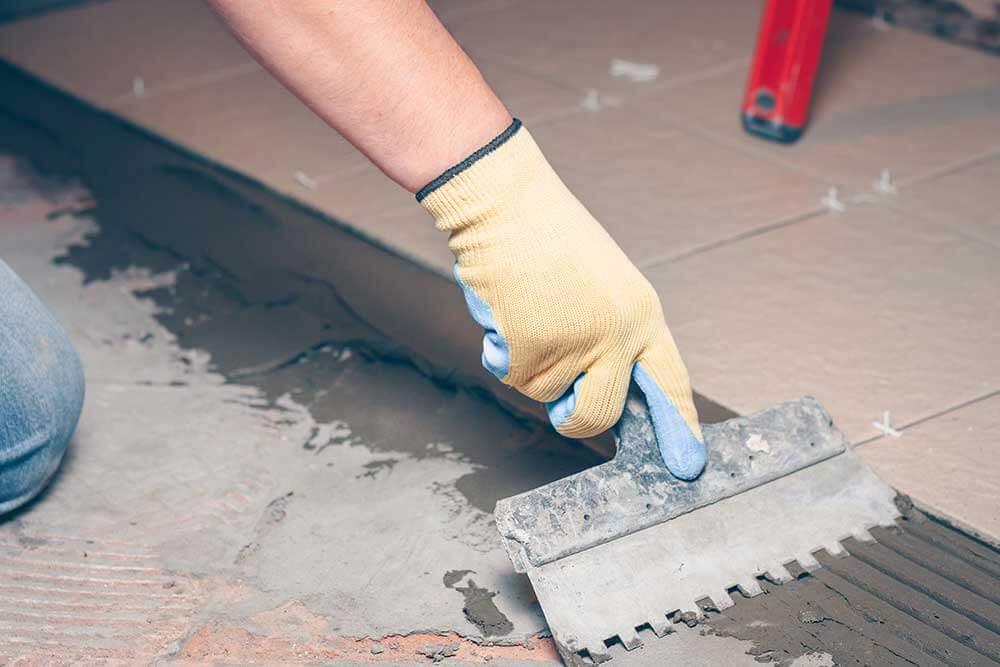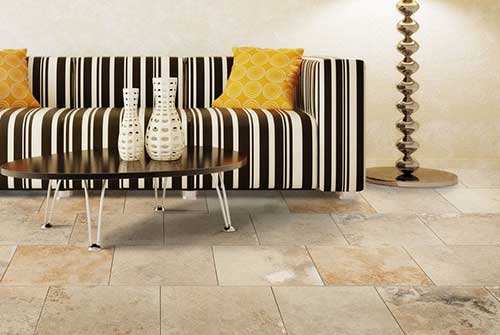Travertine tile is a beautiful option that is suitable for a number of uses and in a variety of environments. The long history shows it is a dependable stone and the uniqueness of each project is clearly explained by the process of extraction and refinement. Before you purchase your tile be sure you know what grade tile you are receiving and that the color is what you are looking for and the finish is appropriate for your project. If Shopping for Tileyou are unsure if travertine is right for you consider the cleaning and maintenance required as well as where the tile is best used and the difficulty associated with installation. Finally, if you are unsure about anything that pertains to your tile selection, don’t be afraid to ask questions!
Travertine Flooring History
The history of travertine flooring dates back to the time of the first Dynasty of Egypt. It is found around the world from Turkey to Mexico, although the largest deposits are in Italy. Because of its abundance near water sources, travertine has been a popular building material in civilizations across the globe and has been used in buildings in some of the greatest cities including Rome, Hierapolis, New York, and Paris.
How Travertine is Made
Travertine is a naturally occurring stone that is extracted from the earth in quarries located around the world. The appearance of the tile will vary based on where it developed due to the unique geological conditions found in each area. The four primary methods of extraction are channeling machines, wire saw, chain saw, and water-jet cutting. Once the stone has been removed from the ground it is sent to a manufacturer, sliced into smaller slabs, polished, and packaged.
Types and Grades of Travertine
Purchasing travertine tile may be confusing at first because different manufacturers will provide different grade names. No matter the name, there are essentially three grades; premium, standard, and commercial. The best grade provides an almost flawless stone with few pores that have been filled. The next grade will be much like the first but with more pores and a bit more color variation. The lowest grade will have visible flaws as well as more, and larger, pores that may not all be filled in completely. In addition to the three different grades there are also two cuts that dominate the travertine tile market which are the vein cut and the Fleuri cut.
Colors Finishes and More
Travertine is a naturally occurring stone. As a result of its geographical location travertine can be found in a wide variety of colors from beige to chocolate. There are four finishes commonly found on travertine tile; polished, honed, brushed, and tumbled. By selecting the appropriate finish your tile could have a glossy appearance or a more rugged texture. The tile can be further customized by the edging that is applied. There are several edging options which result in edges that can be quite rustic or edges that have a pillowed appearance.
Cleaning and Maintenance of Travertine Tile
Travertine tile, when cared for properly, can last beautifully for a lifetime. Maintenance is, of course, the most important step in ensuring your tile remains beautiful but even those with the best of intentions will occasionally have an accident. Should a stain appear on your tile, it is possible to lighten or remove it with natural poultices. The cleaning process for exterior stone is a bit different as the environment and expected condition of the stone differ.
Is Travertine Right for Me?
Travertine is a beautiful stone, and the tiles make fantastic floors, countertops, and showers. The stone is also quite durable, however, it is considered a soft stone and is best used in areas that are indoors and receive moderate use.
Travertine: Pro or DIY?
The decision about whether to hire a professional tile layer or to install the tile yourself comes down to two things: time and money. Installing tile flooring is a time consuming process. This is especially true if you have no previous experience. On the other hand, travertine tile is quite expensive, and the cost of hiring someone to lay the tile for you will be expensive as well. You would save money on the project if you did it yourself, everything went perfectly, and you already had the majority of the tools needed for the job. However, if you make frequent mistakes and you need to buy tools, you could end up only saving a small amount. Be sure to look at all of the costs associated with installing the flooring yourself, and not just the difference in the price of labor.
How to Install Travertine Tile
Installing travertine tile is much like installing any other tile. You must first prepare the surface, lay the tile, and then apply grout to keep the tiles in place. This basic process is the same whether you are using the tile for flooring, walls, or countertops.
How to Repair and Replace Travertine Tile
No matter how carefully your tile is installed and cared for, you will eventually find a need to repair or possibly even replace a tile. This process can be time consuming, but if you have spare tiles from the initial installation, it is certainly a better choice than having to replace the entire floor. A loose tile is the most common repair needed although you may also need to repair a damaged subfloor, which is a bit more difficult.
Travertine Buying Checklist
When you make a decision to buy travertine tile, there are several things you will need to take into consideration such as your budget and if financing is going to be needed and if it is available. Knowing what questions to ask about your warrant and the installation process are also extremely important. Be sure to have a checklist of all pertinent information ready before you make your purchase.
How Much Do You Need?
Accurately determining how much tile you need is an important first step. You want to make sure you order enough to cover the surface plus a bit more in case any tiles are broken and in case sometime later one or two tiles may need to be replaced. The reason these extra tiles are especially important is that each lot of travertine will have a unique pattern running through it. If you find you need a replacement, years down the road, it will likely be impossible to find a good match. So how do you figure out how much tile you need? First, measure the surface you will be working with and multiply the width by the length, this will give you the total area. Each square foot is 12”x 12”. If you have selected 12” tiles, you will need one for each square foot. Use the chart below to help determine how many tiles you will need for an assortment of tile sizes:
- 4” tiles – Total area / .1089 = Number of 4”tiles required
- 6” tiles – Total area / .25 = Number of 6” tiles required
- 9” tiles – Total area / .5625 = Number of 9”tiles required
- 18” tiles – Total area / 2.25 = Number of 18” tiles required
Once you have figured out the number of tiles required to complete the project, add an additional 10 percent for the reasons listed above. If you will be completing the project yourself and have little experience, 20 percent will give you more room for mistakes.
Finally, remember that even the most perfectly crafted travertine tile will have color variations and imperfections. Do not think of these as a negative aspect; instead, revel in the uniqueness they will impart to your project. There will be differences between the samples you view and the tiles that are shipped to you, because the look of the tiles between pallets, and even within pallets, will vary. This is not because they are imperfect; rather, it is because of the crystallization and mineralization process. This is to be expected, and the pattern that emerges in the finished product will be completely different from that of any other floor. This is true even if both floors are made with travertine tile, installed by the same people, and purchased from the same dealer. It is exactly this individuality that has made travertine tile such a popular building material throughout the ages.
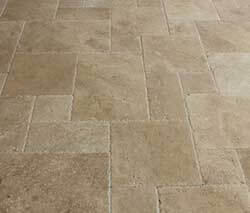
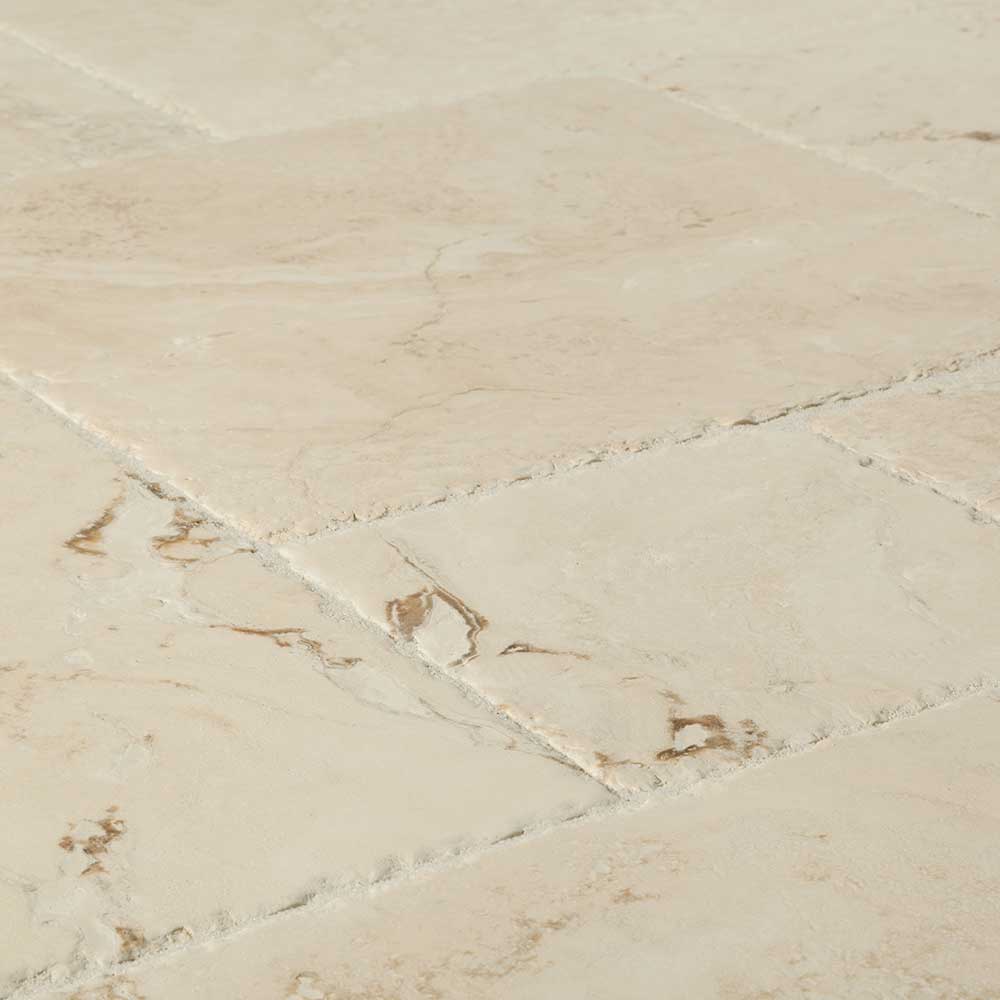
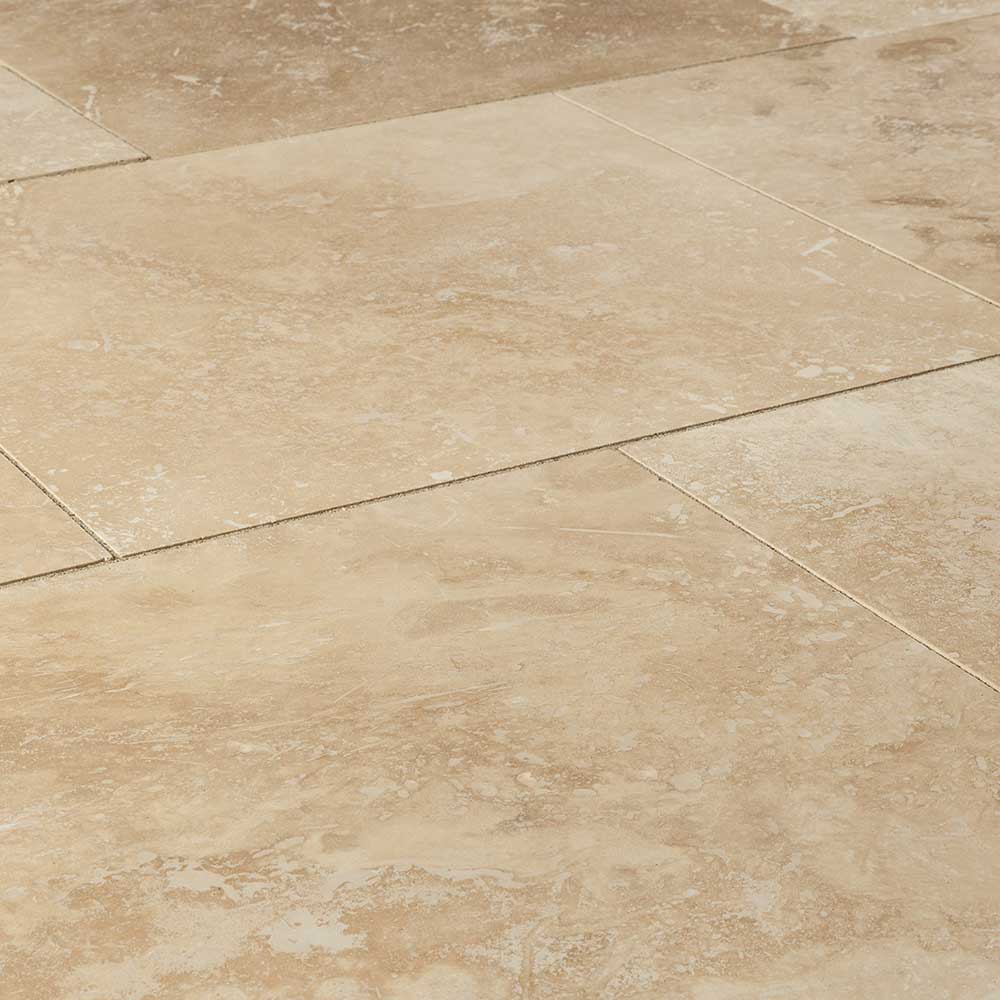
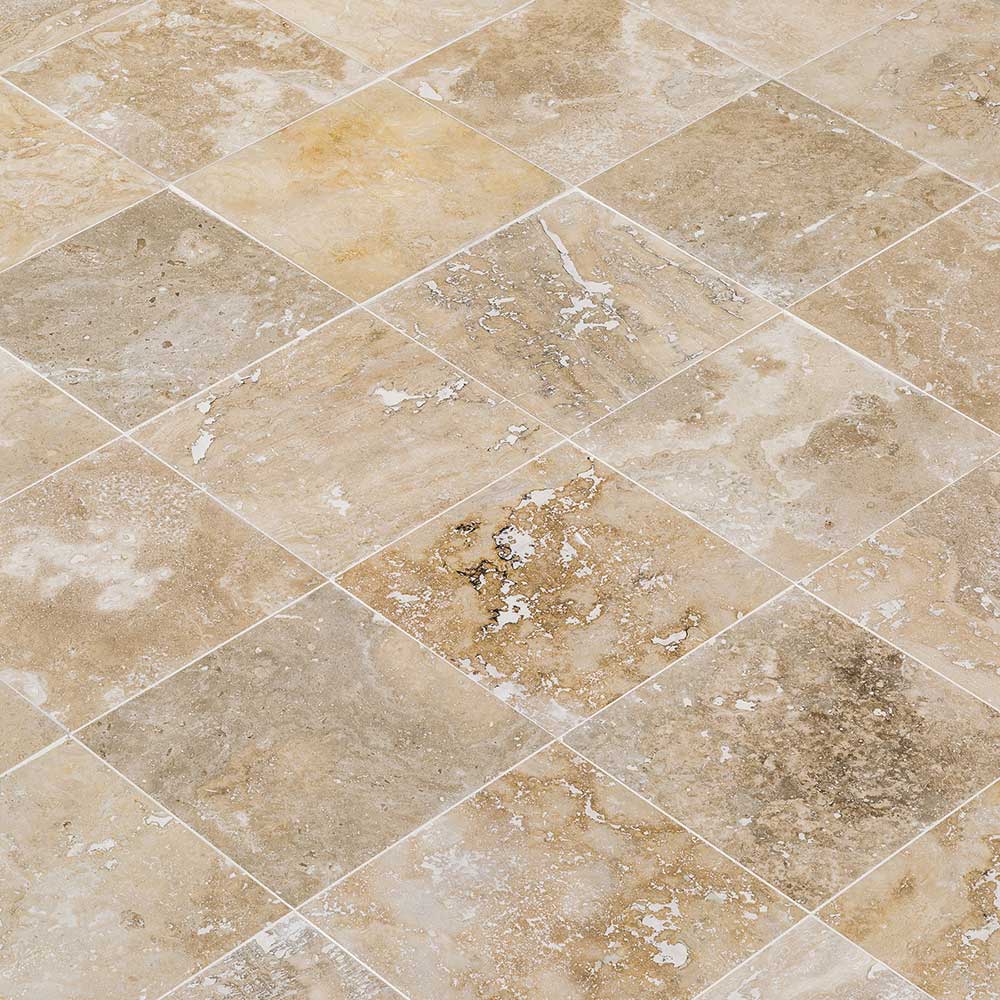
![[object Object]](png/logo-blue9b01.png)
